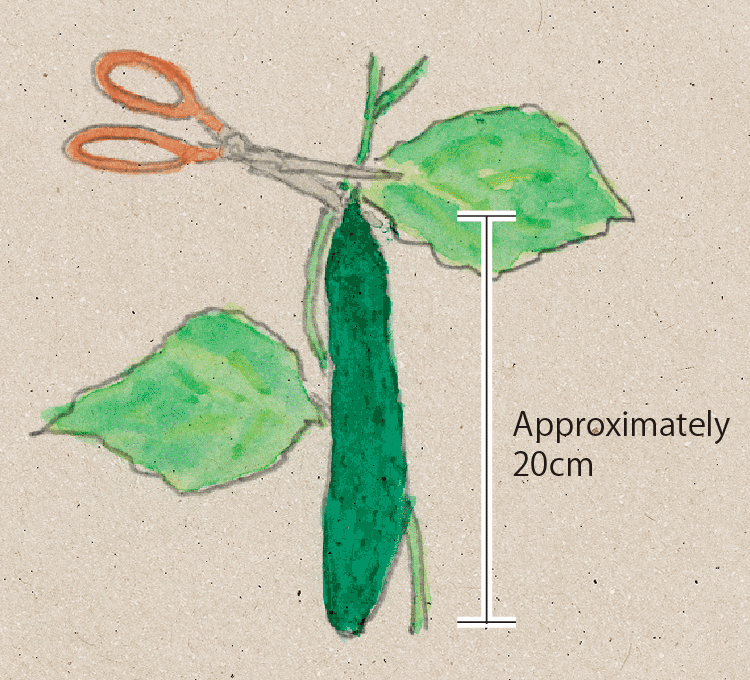

Refreshing vegetables that grow with a lot of exposure to sunlight in summer. If planting it in spring, you can harvest one crop after another during summer.

Up to two weeks before planting seedlings, disperse 150g of magnesia lime over the whole area of soil per square meter, and plow deeply. One week later, apply 3 kg of compost and 100g of compound fertilizer as base fertilizer, over the soil per square meter, mix them into the soil, and create ridges with a width of 90cm and a height of 20cm.
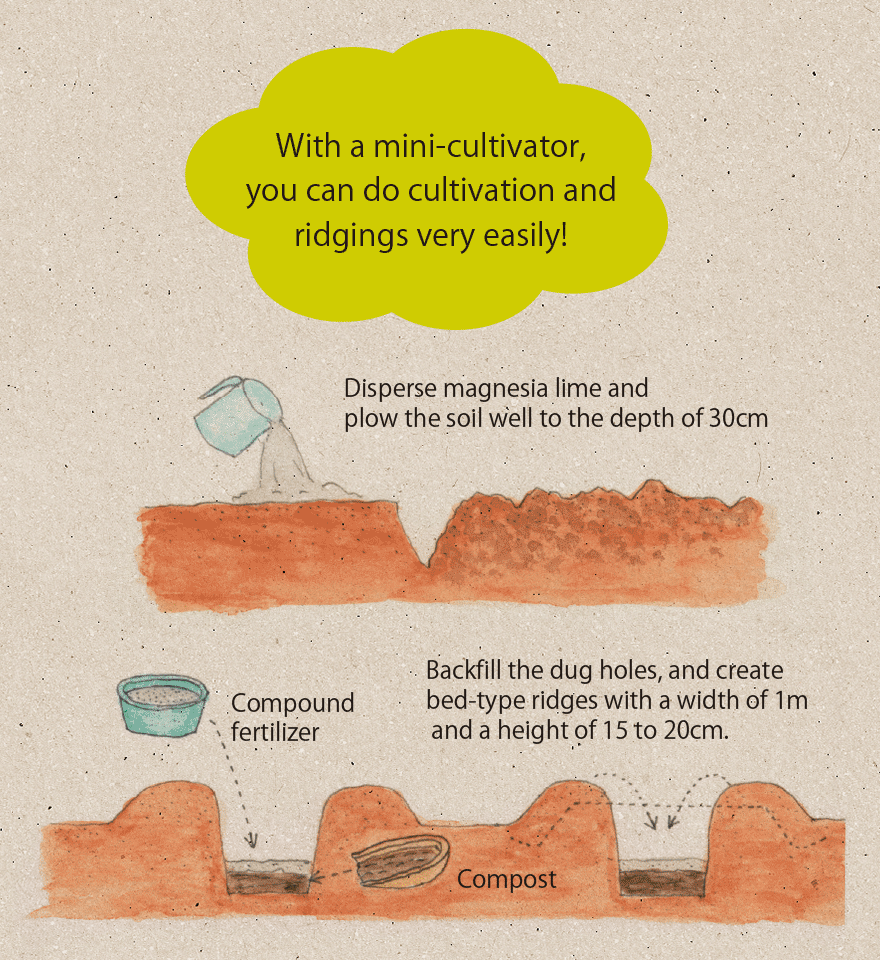
Sow 4 to 5seeds in each part at 40cm intervals. Cover them with soil approximately 1 cm thick and water well.
Sow 4 to 5seeds in each part at 50cm intervals. Cover them with soil and water them.
After sprouting, thin out poor-growing seedlings in several installments, and when the true leaf increases to three or four, grow the plant in the form of standing by itself.

Put horticultural soil in a plastic pot, sow approximately three seeds, cover them with soil, and water them.
After sprouting, do thinning, and when the plant has three true leaves, make the plant stand by itself. When the leaves increase to four or five, transplant the seedling into the field.

Take out the potted seedlings from the pots slowly while trying to keep the clump of soil around the roots. Plant them in the field at 40 cm intervals between the roots carefully to avoid deep planting, and water them well.

When the number of leaves becomes approximately 10, add fertilizer at a pace of twice per month to avoid depletion of fertilizer. Apply a handful of compound fertilizer to the roots of each plant, and earth up the soil. When the plant begins to bear fruit, add the fertilizer at a pace of once every 10 days.
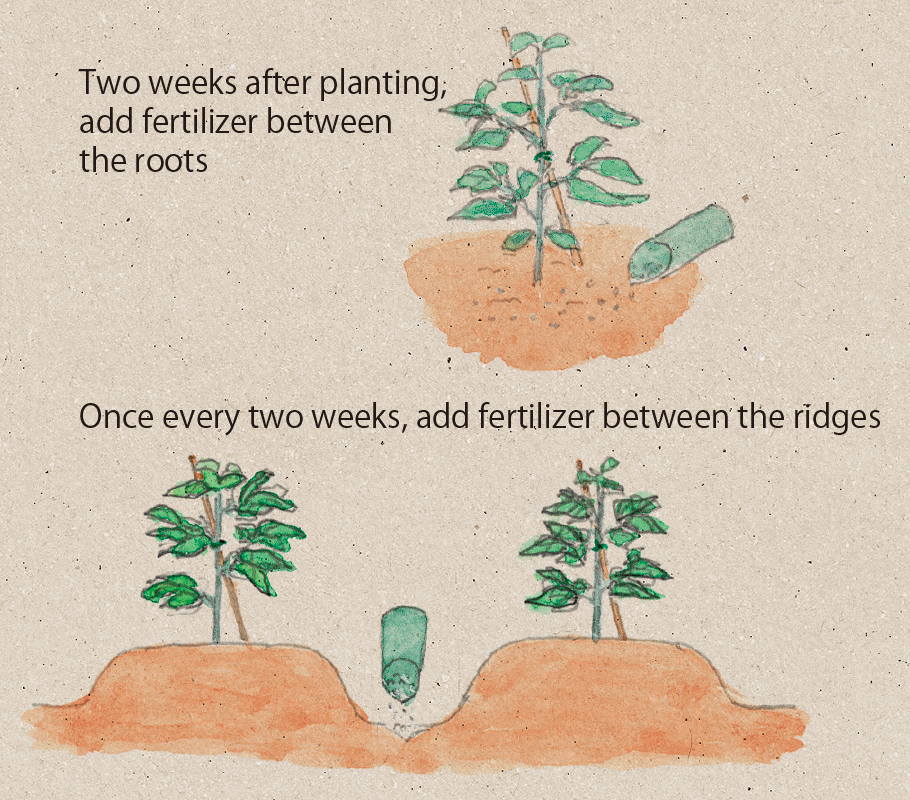
When the plants grow to a height of 30cm or so, put up stakes aslant, and tie the stems to each stake with vinyl ropes. When they grow and the vines begin to extend, form inverted Vs by pairs of stakes, and guide the vines.
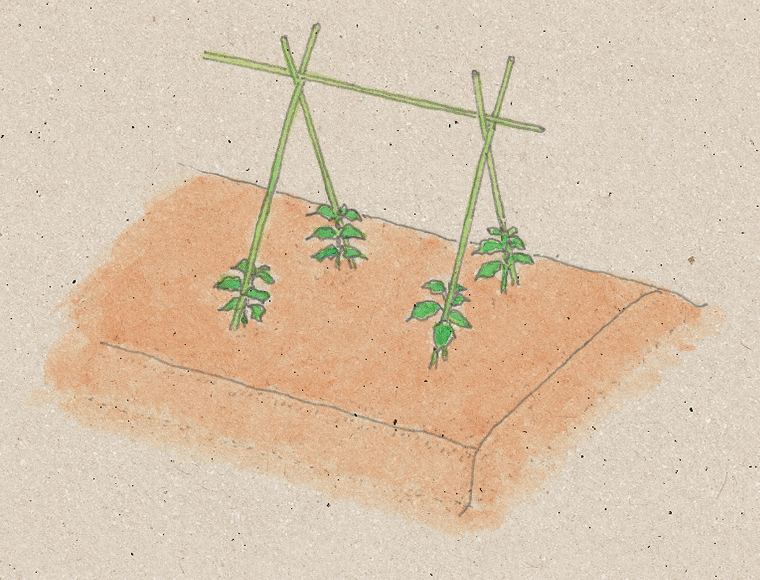
You can prevent powdery mildew in which leaves and stems appear to be sprinkled with white powder, and downy mildew in which leaves discolor brown, by applying chemical agents early.
When the main vine extends to the height of the stake, pinch off apical bud. Pinch off the branch vine as well when it has two true leaves. Around this period, remove fallen leaves under the plants to improve airflow.
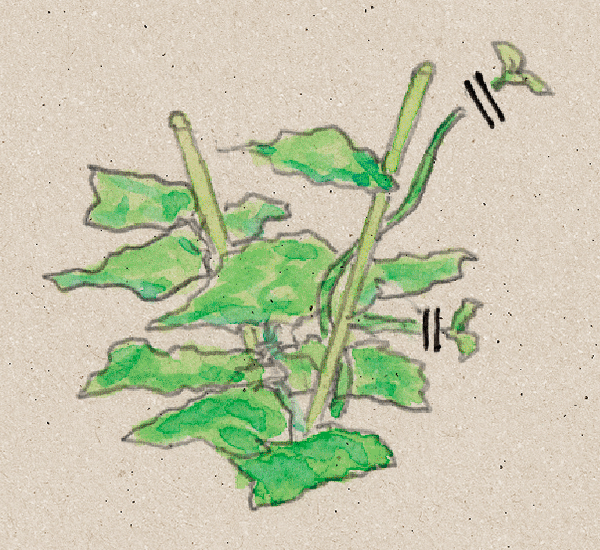
When the fruit becomes approximately 20cm, harvest it early before it ripens. Be aware that if the fruit becomes too big, it will lose taste and the roots get weak.
